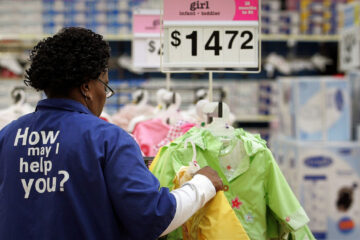Farm to table has become a trendy thing.
Fancy restaurants trumpet the idea that their chef visits local farms and selects which animals and vegetable will grace your plates. There’s a certain romance to the idea that what you’re eating was produced locally.
Related: Popular breakfast chain franchise files for Chapter 11 bankruptcy
There’s also a cost efficiency to this approach. Yes, local, boutique farms may have higher prices, but not having to ship the item across the country lowers the cost.
Some items benefits from this. Most produce does not travel that well and while that’s not true for meat, it is for fish.
If you eat Key West shrimp in Key West, for example, it might cost you $25 for a pound of the Royal Reds — sweet shrimp caught in the Keys that tastes like lobster. Order some in Las Vegas and you’ll pay that much for a shrimp cocktail weighing about a quarter of that.
💵💰Don’t miss the move: Subscribe to TheStreet’s free daily newsletter💰
Fish is, of course, hard to ship compared to produce, but the reality is that farm-to-table isn’t just for fancy restaurants. Even fast-food chains try to source the potatoes for their french fries, and the meat for their sandwiches from farms as close to each location as possible.
In reality, farms play a key role in what Americans eat, and they’re failing at a startling rate.
There has been an increase in U.S. farms filing for bankruptcy.
Image source: Shutterstock
U.S. farms are essential
Many Americans don’t think a lot about where there food comes from. The reality is that while we do import food, the vast majority of what we eat is produced domestically.
In 2016, close to 90% of the food and beverage products consumed in America were produced in the U.S. According to the United States Department of Agriculture (USDA).
American farmers, however, also rely on exporting food to keep their businesses afloat,.
More bankruptcies:
Popular restaurant and bar chain files for Chapter 11 bankruptcyPopular athletic shoe chain files for Chapter 11 bankruptcyAward-winning cosmetics brand files for Chapter 11 bankruptcy
“The United States is the world’s second largest agricultural trader, behind the European Union. U.S. agricultural exports and imports increased significantly over the last 25 years due to the economic ascension of many emerging economies, as well as the implementation of foreign and domestic policies that expanded U.S. access to foreign markets,” according to USDA data.
A global tariff war would be very bad for American farmers. In fact, the suggestion that one will be coming in less than 90 days has already been bad.
U.S. farms are kept afloat by exports
While the local chef handpicking which chickens he plans to serve that night while buying a few bags of vegetables is a good restaurant business model, it’s not supporting most farms.
“With U.S. agricultural output growing faster than domestic demand for many products, U.S. farmers and agricultural firms have been relying on export markets to sustain prices and revenues. As a result, U.S. agricultural exports have grown steadily over the past 25 years — reaching $174 billion in 2023, up from $57.3 billion in 1998,” the USDA data shows.
All of the talk about tariffs has contributed to a dramatic increase in American farms filing for Chapter 11 bankruptcy.
“President Donald Trump’s global tariffs and freezing of federal agriculture grants have added to financial strains on American farmers, who are seeking refuge in bankruptcy at the highest rate in years,” Bloomberg Law reported.
Related: Huge burger chain franchisee files for Chapter 11 bankruptcy
The situation has been particularly devastating for family farm owners.
“Family farm bankruptcies increased by 55% last year compared to 2023 and are trending even higher this year as farmers continue to grapple with depressed agricultural commodity prices and high input costs,” the website shared.
Farmers typically only receive about $0.15 of every dollar’s worth of goods they sell. These are very low-margin businesses which can easily fall victim to a global trade war, or even the suggestion of one.
“The number of farm loans at risk of defaulting is the highest it’s been since 2020 as demand for non-real-estate farm loans has surged while repayment rates dropped,” according to the Federal Reserve Bank of Chicago, which covers much of Midwestern farm country.
Small, family-owned farms generally use Chapter 12, not Chapter 11 bankruptcy, as Chapter 12 has special provisions for farmers.


